Canada's remote (but accessible) dark-sky sanctuary
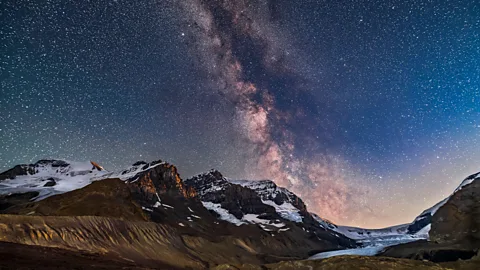 Alamy
AlamySpanning 11,000 sq km of protected, pristine wilderness, Jasper National Park offers a one-of-a-kind destination for stargazers.
It's a balmy October evening and an overture from the Edmonton Symphony Orchestra Strings hushes a buzzing crowd. Dusk has fallen in Jasper National Park, and I'm snug under a blanket, gazing up at a sea of stars amidst the Milky Way's glow. Just below, snow-dusted peaks rise towards the heavens and the clear, glacial-blue waters of Lac Beauvert blend into the inky darkness.
Symphony Under the Stars is one of many events at the annual Dark Sky Festival (17 October to 2 November 2025) held in Jasper National Park, one of the world's largest and most accessible dark sky preserves.
Designated as a Dark Sky Preserve in 2011 by the Royal Astronomical Society of Canada (RASC) and spanning 11,000 sq km of protected land where minimal to no light pollution is allowed, Jasper isn't just one of the best places to stargaze; it's also an ideal spot to see the Northern Lights. And as experts predict that 2025 "will mesmerise" with one of the greatest aurora displays in 20 years, there's never been a better time to explore this quiet corner of the Canadian Rockies.
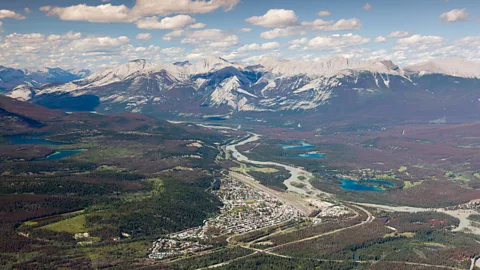 Alamy
AlamyUnlike other Dark Sky Preserves in Canada and the US that have little to no infrastructure or lodging, the eponymous 4,700-person town of Jasper – located within the preserve – allows travellers easy stargazing access. According to Tyler Burgardt, an astrophysicist and general manager of the Jasper Planetarium, what makes Jasper so unique is visitors can drive right in. Located roughly 3.5 hours from Edmonton and Calgary, the town's hotels and locally led stargazing tours means star-lovers don't need to rough it.
"You get to see something you don't get in other [accessible] places, which is the ability to see thousands of stars, even from the middle of town," Burgardt said.
His favourite tour is one offered in summer, where guests visit the planetarium and then take a twilight stroll down to a peninsula located on Lac Beauvert. Ringed by rugged peaks and hauntingly silent, the only sound you may hear is the soft ripple of wind on the water. Burgardt estimates the Northern Lights are visible here roughly every 10 days to two weeks. "It's just absolutely beautiful," he said. "It's a really cool way to truly experience the nighttime side of the Canadian Rockies."
The quaint, alpine community is committed to ensuring that minimal artificial lighting is visible by installing streetlights that point downwards and have a softer glow than regular lights. As Burgardt notes, Jasper's location within the national park, and surrounded by the Unesco-designated Canadian Rocky Mountains, also provides a natural barrier from the artificial light created by nearby cities.
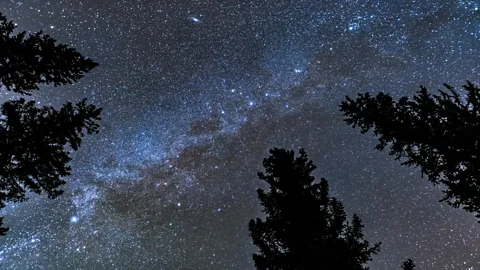 Alamy
AlamyAccording to the RASC, the goal of a dark sky designation in a community is to promote "low-impact lighting practices, to improve the nocturnal environment for plants and wildlife, to protect and expand dark observing sites for astronomy and to provide accessible locations for naturalists and the general public to experience the naturally dark night sky".
Phillipa Gunn, public relations and communications officer for Parks Canada, said Jasper National Park initially met some of the requirements from the RASC needed to become a Dark Sky Preserve prior to its official designation, including accessible observation sites where visitors can view the sky.
"Jasper National Park is an ideal location for a Dark Sky Preserve as 97% of the park is a designated wilderness area, free of light pollution," Gunn said. Parks Canada has also continued to expand its dark sky interpretation programmes, while working with the town and private partners to ensure all the street fixtures in the townsite are dark-sky compliant. As a result, when driving to Jasper at night, it's nearly impossible to tell a town is even located in the vast blackness that envelopes the area.
In July 2024, a series of devastating fires ripped through Jasper, causing the "jewel of the Rockies" to close for several months. The park reopened last autumn in time for the Jasper Dark Sky Festival – albeit just on a smaller scale. But with 2025 marking the festival's 15th anniversary, Naji Khouri, director of destination development for Tourism Jasper, says this year's festival will be bigger than ever before. Plans include a drone show where 200 synchronised drones put on a light display, notable guest speakers (Bill Nye has previously attended), planetarium stargazing sessions and a portable telescope and tent at the base of the Jasper Sky Tram.
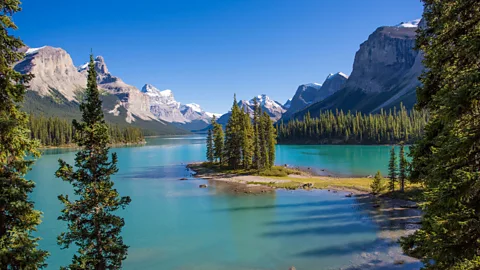 Alamy
Alamy"We invite space or science enthusiasts, aurora chasers and anyone that is fascinated by the dark sky and wants to learn more about it. We have unique experiences that are really of interest to a wide range of people, including families," said Khouri. And locals want people to know that Jasper isn't only open for the Dark Sky Festival, but for business as usual, with more than 80% of local businesses back open since the blaze.
After hiking the Sulphur Skyline trail to experience sweeping views of the Fiddle River Valley and Utopia Mountain, paddling on the "pearl necklace" that is Maligne Lake or exploring the Pyramid Lake Overlook by day, visitors should also seek out stories of the stars from an Indigenous and cultural lens.
The Indigenous people of Canada have long utilised the night sky in all aspects of daily life: the stars and constellations served as guiding lights for their ancestors and the sky was used as both a clock and calendar, indicating when to plant, hunt and work the land. The stars are also intrinsically linked to First Nations' spiritual identities and are connected to the legends of the past.
Matricia Bauer of Warrior Women, an Indigenous- and women-owned business run by Bauer and her daughter, offers a fireside stargazing tour in Jasper that is based around Indigenous creation stories. Being of Cree descent, Bauer recognised the importance of decolonising her own education and that included learning about the Cree Star Chart and the Indigenous constellations that came to rest in the kisik (sky), in Cree.
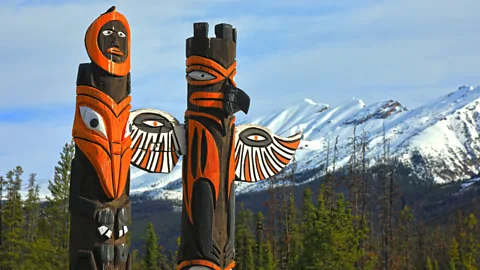 Alamy
Alamy"[The Cree Star Chart] made sense of the world around me, it made sense of the Northern Lights," she said. "I understood who Star Woman was. I understood why we come from the stars and why we return to the stars."
In Cree culture, there are different Star Beings, and Star Woman is one of them. According to Bauer, Star Woman saw the Earth – where humans lived – and she gave up her Star Being to come to "Turtle Island" (North America) . When she became pregnant with twins, this was the start of the First People. At the end of her life, she was granted three wishes and one of the wishes was that she could return to the sky.
More like this:
• The Indigenous tribes reclaiming travel
"And so, when we see the Northern Lights, we call that the Cipayuk," said Bauer. "It means ancestors dancing, or ghosts dancing. It's reminding us that there is another realm that exists, that we get to stay in for the rest of our lives. It's when we go back to the Star World where we came from."
As Bauer recants stories with songs, she also tells me about Spider Woman, the one who is weaving our fates in the dark sky that soars above us. She then recounts the story of the coyote, tricking the wolves and bears into the sky so that he could create his own constellation. A story that takes place in winter, to be told in winter, when the days are short, the nights are long and the fire becomes a place to gather.
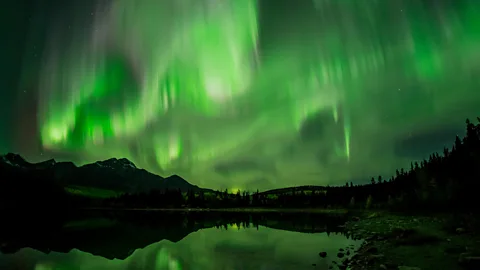 Alamy
AlamyTo Bauer and many First Nations residents in and around Jasper, the stars, also known as achakosak, are considered relatives: "Every constellation, every star has a beautiful song, has a beautiful story, has a beautiful place in our culture."
There are many more stories that Bauer wants to tell for visitors, and many more conversations to still be had under the black cloak of Jasper's night sky. The snap, crackle and pop of the fire is an accompanying beat to the drum that she plays, and her voice dances towards the place where she knows she will one day return.
--
CORRECTION: A previous version of this story incorrectly noted that Wood Buffalo National Park and Grasslands National Park don't have lodging available for travellers. This has since been corrected.
If you liked this story, sign up for The Essential List newsletter – a handpicked selection of features, videos and can't-miss news, delivered to your inbox twice a week.
